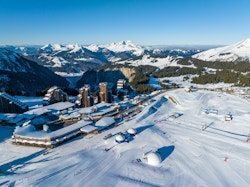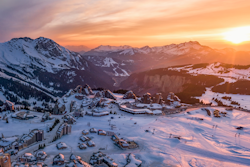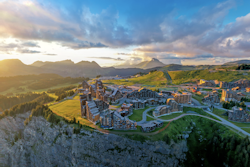Solar photovoltaic production is more efficient at altitudes
From February 4th to 24th, 2023, Energy Observer Foundation's exhibition village takes home in Avoriaz. The goal? To raise awareness of the energy transition and sustainable development challenges and to exhibit low-carbon mobility solutions and applications. An opportunity to examine the potential of solar energy in high mountains.

On top of positive energies
In the high mountains, solar photovoltaic installations remain rare. Some of them allow supplying isolated areas. However, larger-scale projects are currently being developed. In the Vésubie valley (Alpes-Maritimes), for example, nearly 20,000 m2 of solar panels have been installed at an altitude of over 1,500 meters. Firstly, as studies have shown, the sun shines stronger at altitude. And because the mountain climate avoids the observed drop in performance of up to 0.5% per degree when the temperature rises above 25°C.
Producing all year round
Even better, researchers suggest solar panels in the high mountains could shift peak photovoltaic production from summer to winter. How can this be done? By tilting the panels sharply. Up to 65°. As opposed to 30 to 35° for panels installed in the plains. That prevents snow from covering the installation, making it inoperable while taking advantage of the reverberation of the sun on the snow cover. In sum, up to 15% more solar energy could be captured than with a low-altitude installation. Thanks to bifacial photovoltaic panels, the promoters of a 100,000 m2 solar panel project at an altitude of 2,000 meters near Gondo (Switzerland) hope to go even further and produce four times more electricity in winter than a similar installation located at full altitude.
The promise is beautiful. And so will the result if the deployment of solar energy in the high mountains is developed with respect for the environment, the territories, and the landscapes. With the delivery of solar panels in a few days by air rather than by several months of round trips by truck. Or with solar power plants designed in already artificial environments. For example, the Bourg-Saint-Pierre dam in Switzerland is only 2% covered by photovoltaic panels. All this is for production 50% higher than a similar installation at a low altitude.
Downloads
- Guide sectoriel montagne 02062022 28.6 MB, PDF Download
- Les Montagnes et la transition energetique bd 2.1 MB, PDF Download

